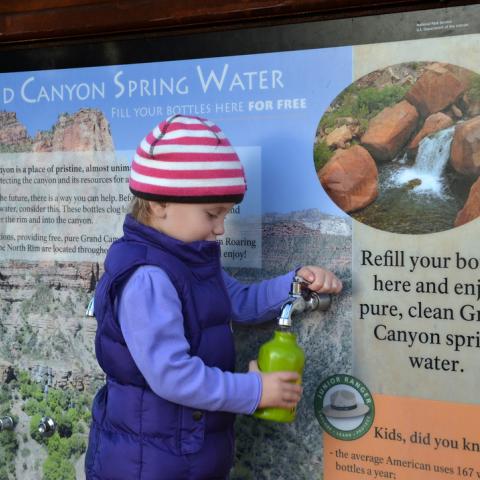
Grand Canyon National Park officials want to replace the aged Trans-Canyon Water Distribution Pipeline, which frequently has leaks and is past its expected life/NPS
The drinking water situation worsened Friday at Grand Canyon National Park, where officials are phasing in another level of water conservation that will impact restrooms and RV dump and fill stations in the park's campgrounds.
The conservation measures are needed due to a series of breaks in the antiquated Transcanyon Waterline that crosses the canyon to bring water to the South Rim. Until park staff repairs the break and water in storage tanks reaches sustainable levels, the park will remain in conservation mode.
Under Level 3 water restrictions the following operational changes will be in effect no later than 8 a.m. Saturday: Camper Services and the RV dump/fill station operated by Delaware North will be closed. Sinks in public restrooms will be turned off and hand sanitizer will be available. Visitors and residents may experience additional water conservation measures while visiting the park.
In addition to the new Level 3 changes, all Level 2 conservation measures remain in place. Under Level 2 water restrictions, the park and its partners work to conserve water by using disposable dishes and utensils in restaurants, serving water by request only, adopting low water-use methods to clean hotel rooms, and practicing basic water conservation measures at home and work.
Park businesses have also installed low-flow appliances, which assist with water conservation efforts year-round. Some ways residents and visitors can continue to help conserve water are to limit showers to five minutes or less, turn the faucet off while shaving or brushing teeth, selectively flush the toilet, wash laundry with full loads, and report leaks to appropriate offices. Residents are also reminded to use non-potable water for plants and lawns and to not fill large-capacity water tanks in the park.
The Transcanyon Wateline, opened in 1965, long has been in need of replacement, something park staff estimate would cost $100 million.
Drinking water is available at the following inner canyon locations: Phantom Ranch, Bright Angel Campground, and Indian Garden. The South Rim water bottle filling stations- including those at the South Kaibab and Bright Angel trailheads- are turned off. Hikers in the backcountry should plan to carry all their water or methods to treat water. Visit nps.gov/grca/planyourvisit/hike-tips.htm for more hiking information.
The public can call 928-638-7688 to listen to a recorded message with updates and additional information about current water restrictions at Grand Canyon's South Rim.
Grand Canyon National Park has a large and complex water utility system that provides water to more than 6 million annual visitors in addition to the 2,500 residents that live in the park.




 Support Essential Coverage of Essential Places
Support Essential Coverage of Essential Places







Comments
Once upon a time, water was hauled in by railroad tank car from Williams or some other place far outside the park. Is anything like that happening now? If not, could it be used again if needed?
Lee maybe we could buy up a fleet of surplus M149 400 gallon Water Buffalos and keep them shuttling between the nearest source of potable water.
Or, better yet, get this damn overdue part of the maintenance backlog fixed!